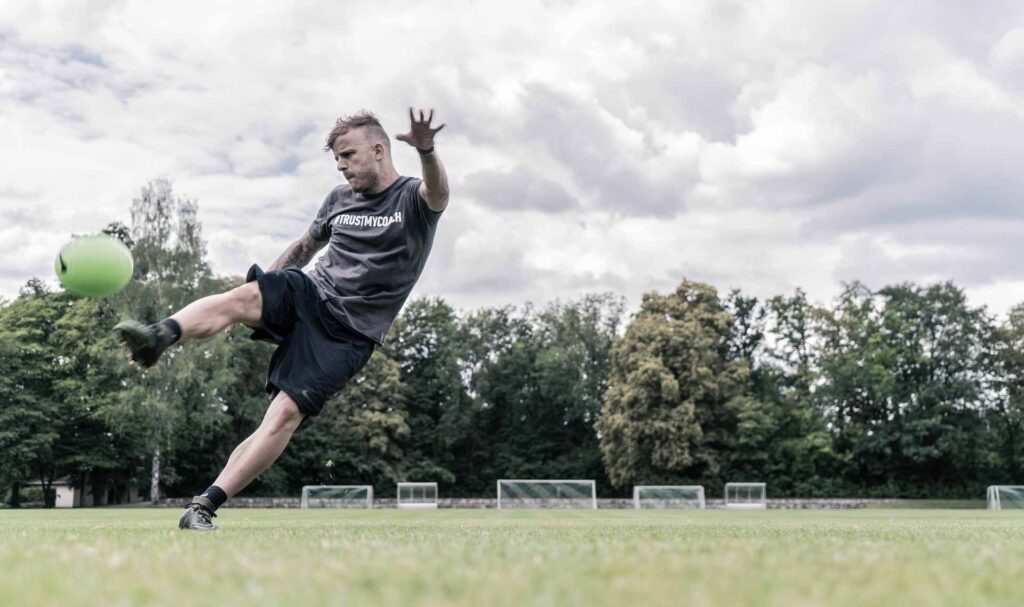
Power and explosiveness are essential components of athletic performance, contributing to the ability to generate force quickly and perform dynamic movements. These qualities are particularly crucial in sports such as weightlifting, sprinting, jumping, and various team sports. Here’s an overview of power and explosiveness, along with training strategies to enhance these attributes:
Power:
- Definition:
- Power is the ability to generate force rapidly, combining strength and speed. It is expressed as the work done per unit of time and is crucial for explosive movements.
- Formula:
- Power = Force × Velocity
- Examples of Powerful Movements:
- Jumping, sprinting, throwing, weightlifting (e.g., clean and jerk, snatch).
- Training Strategies for Power:
- Plyometric Exercises: Incorporate explosive movements like box jumps, jump squats, and bounding.
- Olympic Lifts: Include exercises such as cleans, snatches, and jerks, which involve explosive triple extension of the hips, knees, and ankles.
- Medicine Ball Throws: Perform overhead throws, chest passes, and rotational throws with medicine balls.
- Jump Training: Focus on vertical and horizontal jumps to improve explosive leg power.
Explosiveness:
- Definition:
- Explosiveness refers to the ability to produce a rapid and forceful contraction of muscles, resulting in quick and powerful movements.
- Components of Explosiveness:
- Rate of Force Development (RFD): The speed at which an individual can develop maximal force.
- Starting Strength: The ability to generate force from a static or stationary position.
- Training Strategies for Explosiveness:
- Speed Training: Emphasize quick, explosive movements in drills and exercises.
- Agility Drills: Incorporate drills that require rapid changes of direction and quick accelerations.
- Sprinting Drills: Include short sprints with an emphasis on maximal acceleration.
- Boxing or Martial Arts Training: Activities that involve rapid and powerful movements.
Tips for Training Power and Explosiveness:
- Focus on Technique:
- Proper technique is crucial in power and explosiveness training to maximize efficiency and reduce the risk of injury.
- Progressive Overload:
- Gradually increase the intensity and complexity of exercises to continually challenge the neuromuscular system.
- Rest and Recovery:
- Allow sufficient rest between sets and workouts to ensure optimal recovery and performance.
- Individualization:
- Tailor training programs to individual fitness levels, taking into account strengths, weaknesses, and any pre-existing conditions.
- Combination of Exercises:
- Incorporate a mix of plyometric exercises, Olympic lifts, and sport-specific drills to target various aspects of power and explosiveness.
- Periodization:
- Implement a periodized training program that includes phases of focused power development and appropriate recovery periods.
- Warm-Up:
- Prioritize a dynamic warm-up that activates the neuromuscular system and prepares the body for explosive movements.
- Multi-Joint Movements:
- Engage in compound exercises that involve multiple joints and muscle groups, as they are effective in developing overall power.
- Neuromuscular Training:
- Include exercises that enhance the coordination between the nervous system and muscles, promoting faster and more synchronized movements.
- Consistency:
- Regularly incorporate power and explosiveness training into your overall fitness routine for sustained improvements.
Example Power and Explosiveness Workout:
- Box Jumps:
- Perform 3 sets of 8-10 repetitions, focusing on maximal effort and height.
- Medicine Ball Throws:
- Overhead throws: 3 sets of 8-10 reps
- Chest passes: 3 sets of 8-10 reps
- Rotational throws: 3 sets of 8-10 reps per side
- Power Cleans:
- 4 sets of 6-8 repetitions, emphasizing explosive triple extension.
- Sprinting Drills:
- 5 sets of 20-meter sprints with full recovery between each sprint.
- Agility Cone Drills:
- Set up a cone drill course and perform 3 sets, focusing on quick changes of direction.
- Rest and Recovery:
- Allow adequate rest between sets and exercises to maintain the quality of explosive efforts.
Always ensure a proper warm-up before engaging in power and explosiveness training, and consult with a fitness professional or coach for guidance on technique and program design. These training elements not only benefit athletes but can also enhance overall functional fitness and performance in various physical activities.
